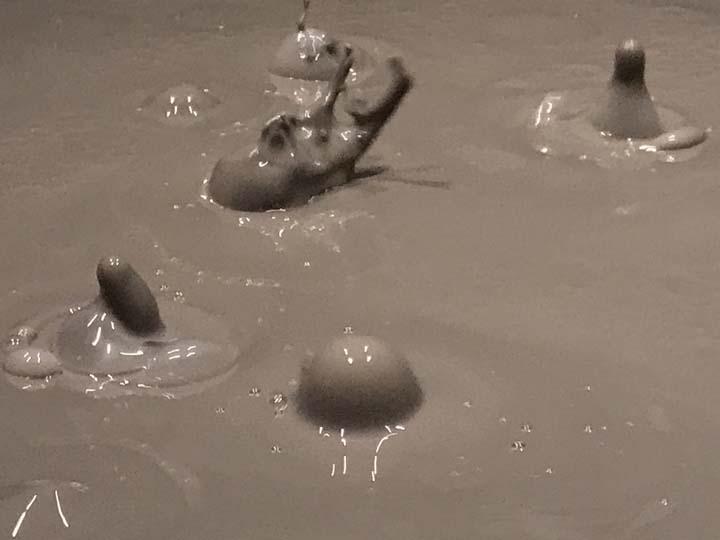Robert Rauschenberg at SFMOMA
Unfixed—ideas, methods, materials—is what can be said to characterize the extraordinary output of Robert Rauschenberg. In Robert Rauschenberg: Erasing the Rules, a sweeping retrospective continuing at SFMOMA, this restless innovator’s contributions to the art of our own time registers in full. Visitors will experience the moment when Modern art made its exit, rules were swept aside, and friendships became collaborations, opening access to the contemporary and the quotidian in art.
Elemental to his art is the constant collaborations he invited and nurtured. One of his White paintings from 1951 was repainted in 1968 by Brice Marden; a Black painting formed of 4 panels was continuously re-sequenced by artists, musicians, dancers and other friends who visited his studio, by 1953, on Fulton Street. A painting made of dirt, as a gift to composer John Cage, was overtaken by mold, which gradually grew into an abstract addition that became a collaborator of the material kind. “I’m opposed, he said, “to the whole ide of conception-execution—of getting an idea for a picture and then carrying it out. I’ve always felt as though, whatever I’ve used and whatever I’ve done, the method was always closer to collaboration with materials than any kind of conscious manipulation and control.”
One of the show’s highlights is Mud Muse (1968-71, above), which is 1,000 gallons of bubbling Bentonite clay in a 12-foot by 9-foot tank. It was created during a time when everyone was fascinated by the moon, after the Apollo landings, and the work could be seen as a liquid allusion to its surface. Photo: © Peggy Roalf, from MoMA installation, NYC
Rauschenberg created the work in collaboration with engineers from the aerospace and manufacturing corporation Teledyne as part of the Los Angeles County Museum of Art’s Art and Technology Program, which invited artists and scientists to work together to realize unconventional projects between 1967 and 1971. It took him, and a team of five engineers, three years of trial and error to get Mud Muse right. It is normally a star of the Moderna Museet in Stockholm and is being seen in San Francisco for the first time since 1971.
The work, which is a complex arrangement of moving and audio parts, was installed with the help of Gunnar Marklund, a technical specialist at Moderna Museet, who personally executes the installation of Mud Muse anytime it’s presented. “It can be many years between installations,” he notes. “The audio equipment and its cabinet are quite old and require maintenance and repair on occasion. And there are sixty-four valves in the bottom of the pool, and they do get clogged; I have to check them every time and clean them as needed.” When it is on view, Mud Muse bubbles to the tune of a recording Rauschenberg made of the work itself bubbling to music played by his friends. But Marklund has a habit of testing the work to the more upbeat sounds of ABBA.
Collection, 1954/1955 (above) is one of the first of a group of works that Rauschenberg termed
"combines," addressing the quandary of placing such work within more clearly defined media categories such as painting, sculpture, collage, or assemblage. Incorporating elements of each,
Rauschenberg's Collection resonates with the eighteenth- and nineteenth-century practice of gentlemen collectors accumulating objects into a wunderkammer, or room of marvels. Courtesy
SFMOMA
Robert Rauschenberg: Erasing the Rules continues at SFMOMA through March 25th. Info
Coinciding with the exhibition Performance All Ages presents BodyCartography Project for a weekend of drop-in, participatory movement pieces that draw on Rauschenberg’s interest in collapsing the borders between visual and performing arts. Saturday and Sunday, March 17–18, 2018, 11 a.m.–4 p.m. Info




